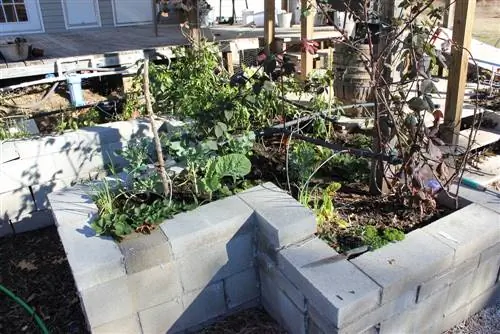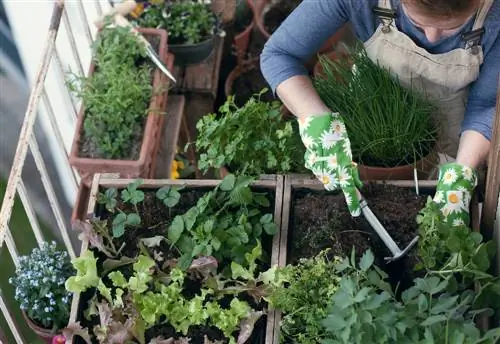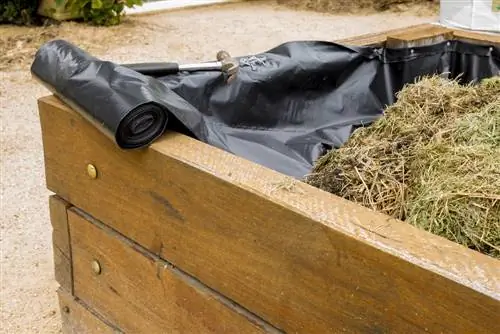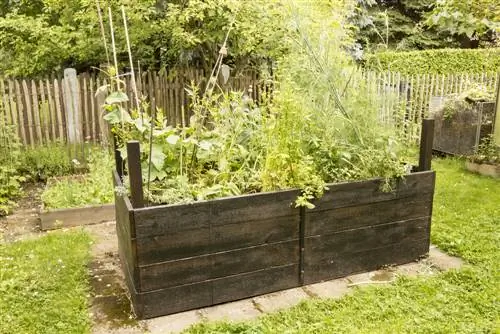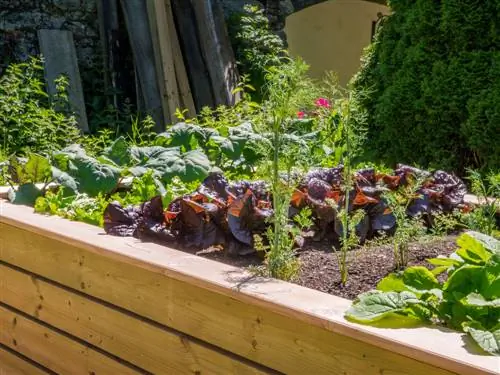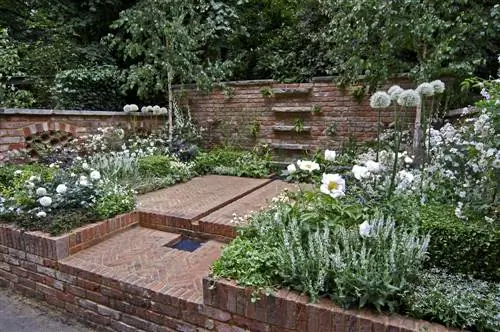- Author admin [email protected].
- Public 2023-12-16 16:46.
- Last modified 2025-06-01 06:02.
Raised beds made of stone are timelessly beautiful in both senses of the word: Not only do they look very versatile and aesthetic, they are also among the most durable of their kind. Stone raised beds can be stacked like a dry stone wall - i.e. without the use of mortar or be bricked up.
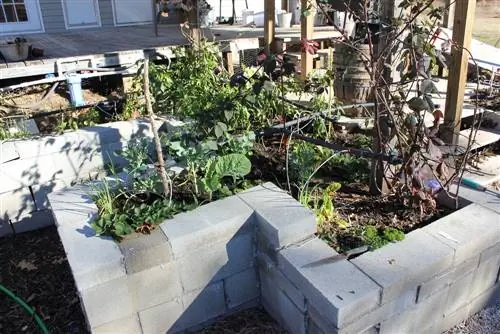
How do you build a raised bed out of stone?
To build a raised bed made of stone, you need bricks, a suitable mortar, gravel for the foundation, pond liner, ground grid and organic filling material. You should have suitable tools such as a spirit level, vibrating plate, plumb bob, spade and masonry tools ready.
Advantages of a stone raised bed
Plants often thrive remarkably well in the vicinity of stones. There are various reasons for this: Stones store the heat of the day in order to release it back into their surroundings at night. They shade and protect their place of rest so that the plant roots are protected from drying out by excessively bright sun. Depending on their size, stones take up more or less space and therefore keep the ground free of excessive vegetation. This means that the plants in their immediate vicinity receive even more light. Dew that has formed on the stones seeps into the ground and therefore also benefits the plants growing here.
Which stones are used to build walls?
The raised bed gardener is spoiled for choice and can choose from a wide range: natural rubble stones, bricks, clinker bricks, paving stones and many other types of stone can be used for a brick raised bed project. Rectangular, round, oval or even like a snake: there is a suitable stone for every shape. If the bed is to be built using mortar, evenly shaped stones are preferable to irregularly shaped ones. These are easier to make into a vertical raised bed wall. Naturally shaped quarry stones, on the other hand, are more suitable for the “dry” variant of the raised bed, in which the stones are loosely stacked on top of each other in a dry construction method - i.e. without the use of mortar. Dry stone walls should always have a slight slope to make it easier to absorb the earth pressure that acts on them.
Wall stones should be frost-proof
Basically, you can work with any stone intended for building walls. However, make sure that they are insensitive to both cold and moisture. Moisture penetrating into the masonry can. caused by frosts in the cold season, lead to serious damage and thus reduce the lifespan of the raised bed. For this reason, bricks, for example, are less suitable for building a raised bed. Clinker, on the other hand, is both robust and aesthetically pleasing, but difficult to process.
Building a raised bed - step-by-step instructions
Once the most important questions about the suitable material have been answered, you can finally start building your stone raised bed.
You will need these materials:
- Gravel for the foundation (essential for brick raised beds!)
- Wallstones
- a suitable mortar (ready mix from the hardware store)
- Pond liner for covering the interior walls
- a floor grid to protect against vermin (e.g. rabbit wire)
- organic filling material (e.g. compostable garden waste, potting soil)
When it comes to tools, you should definitely have a spirit level, a vibrating plate, a plumb bob, a spade and suitable masonry tools ready.
And here we go:
- Dig a foundation trench at least 20 centimeters deep.
- Compact it carefully with a vibrating plate.
- Fill in gravel and compact each layer carefully.
- Now place the first row of stones in a thick bed.
- Align them precisely.
- Now build up the raised bed row by row.
- Lay the rabbit wire on the floor without any gaps.
- Cover the inside with pond liner or another suitable material.
- This serves as moisture protection and therefore longer durability.
- Now you can fill and plant the raised bed as desired.
Tip
Compost raised beds should be created in autumn if possible so that the material has rotted by then and the nutrients it contains are available to the plants.

